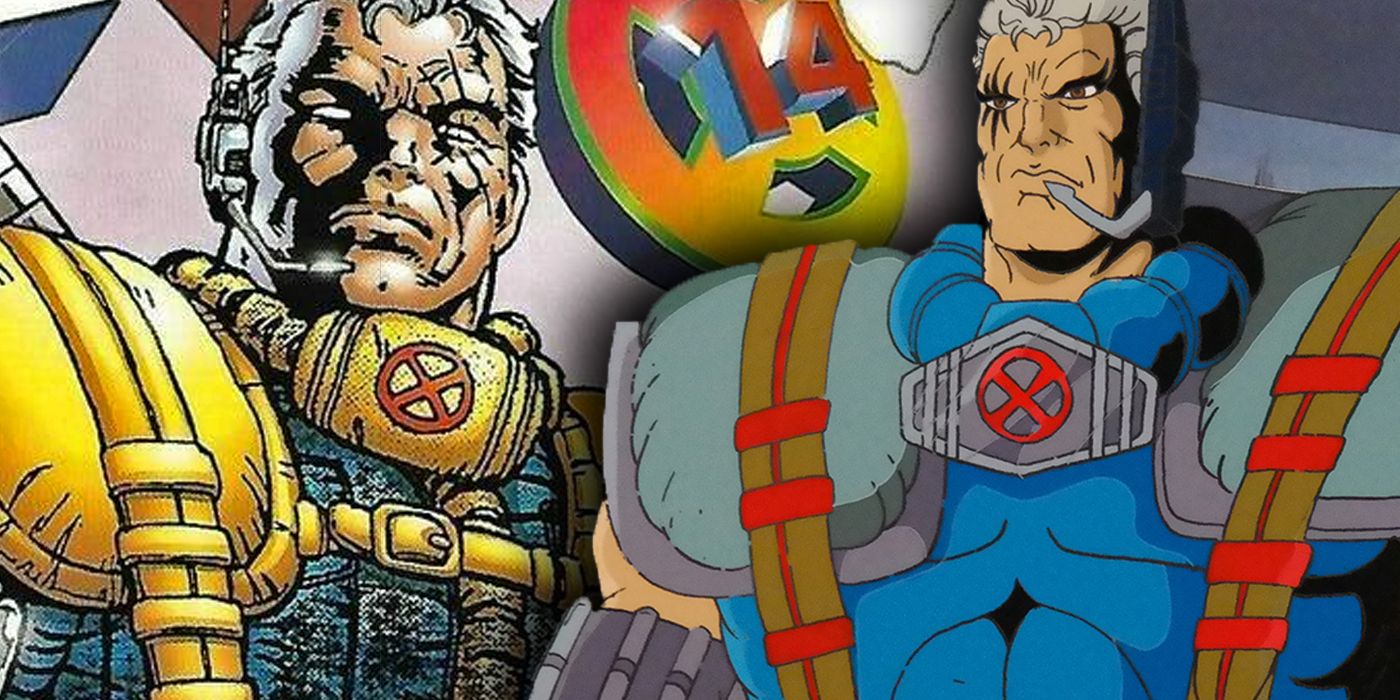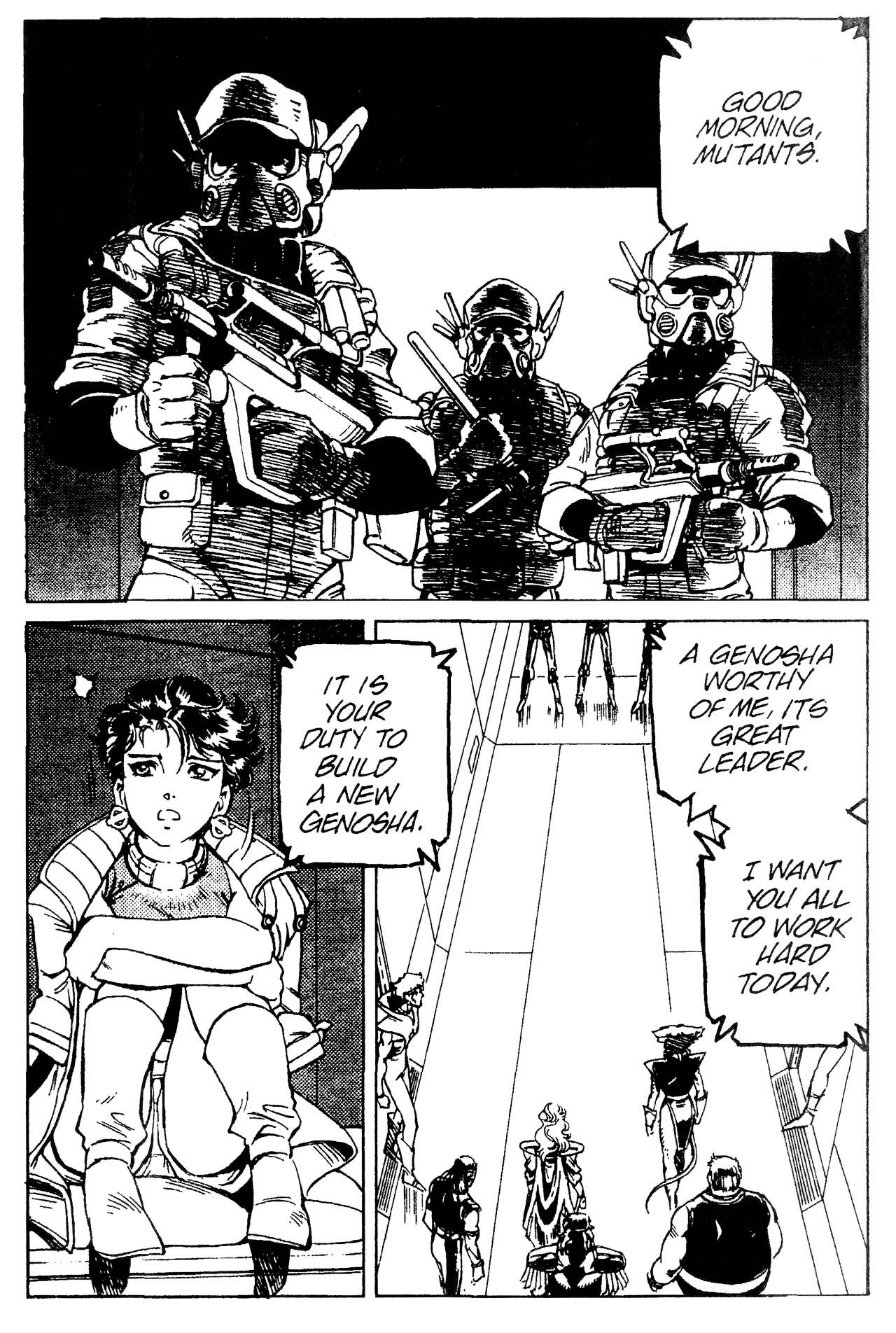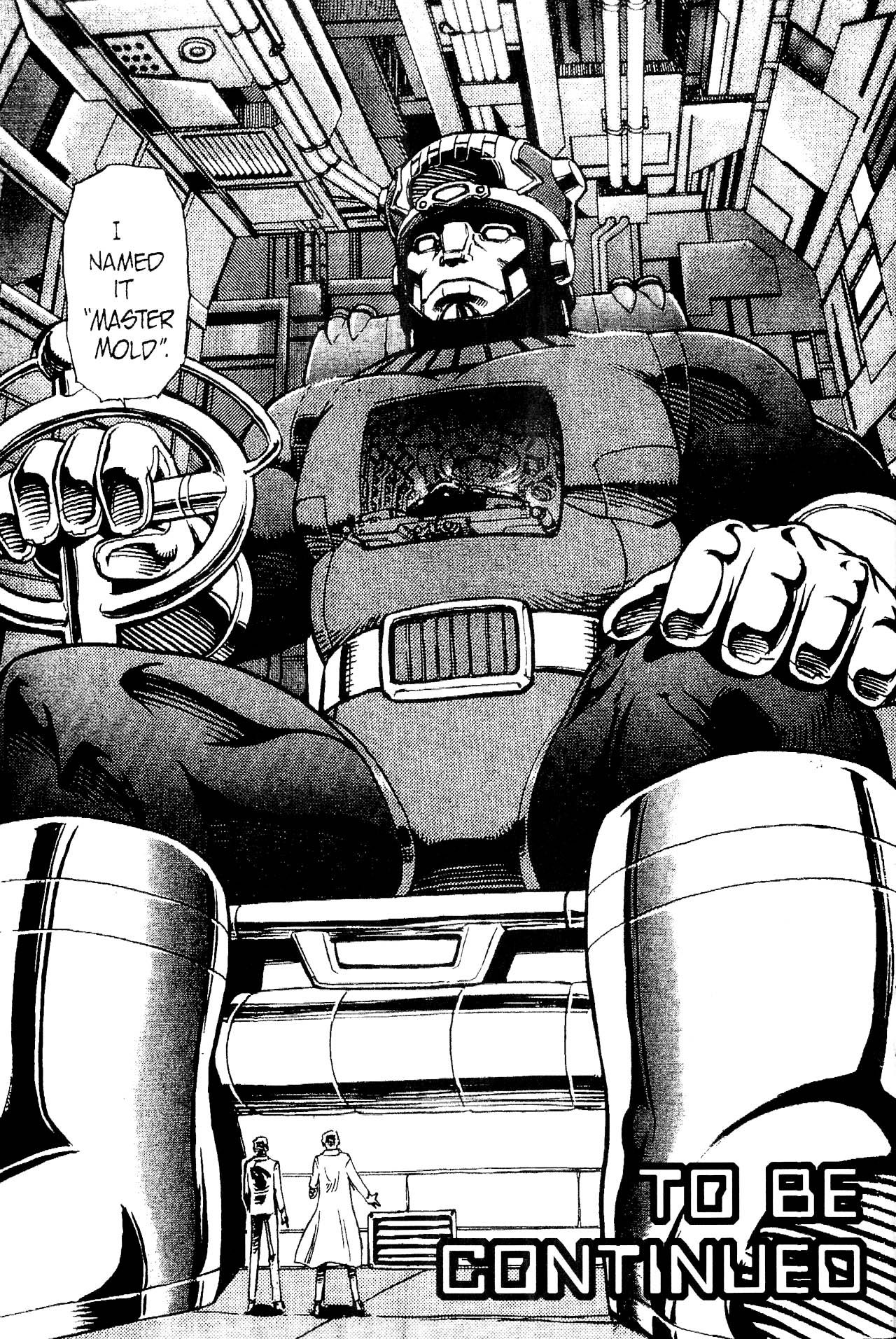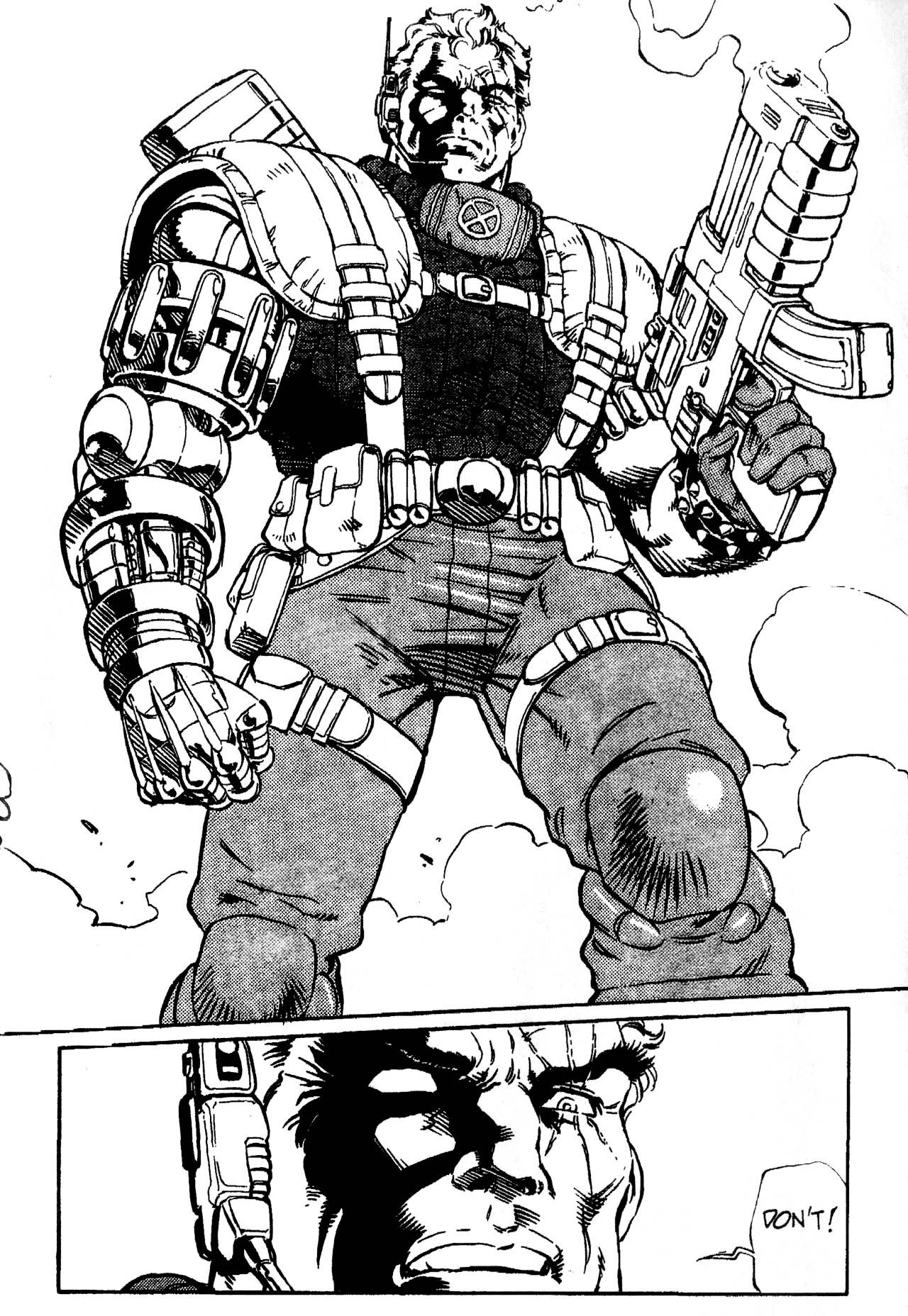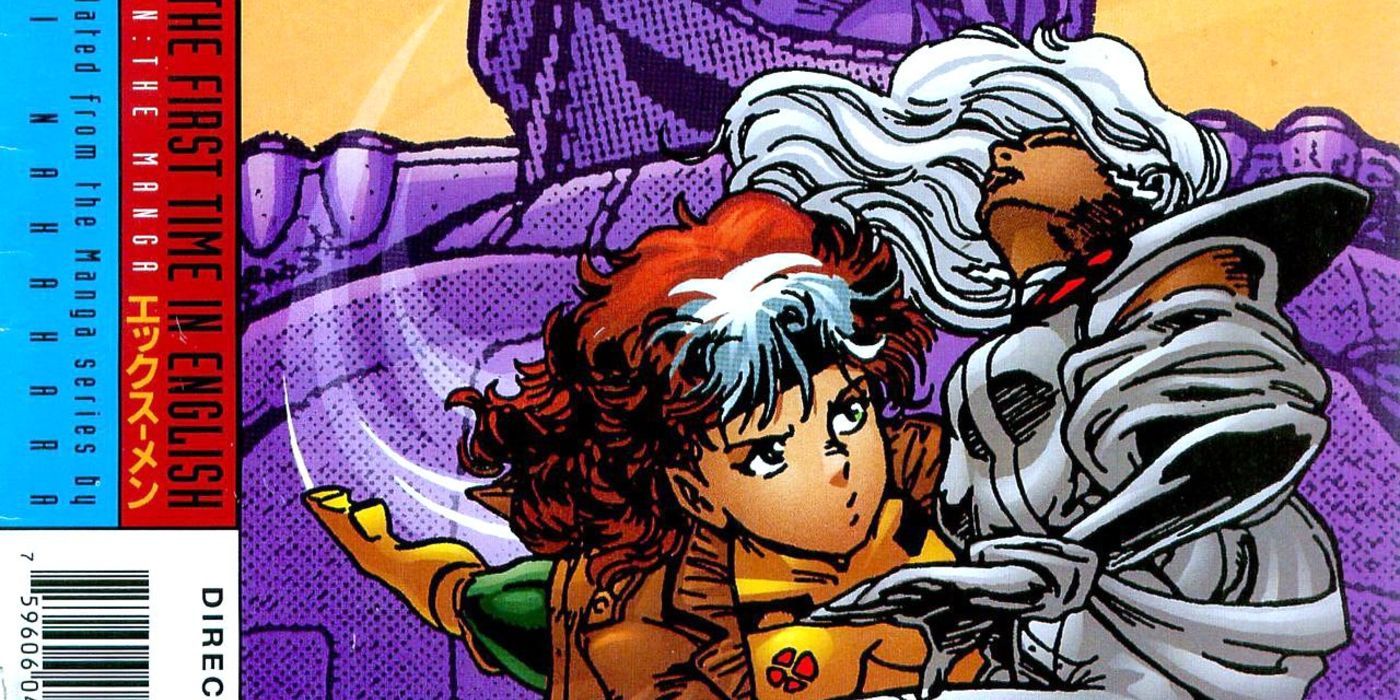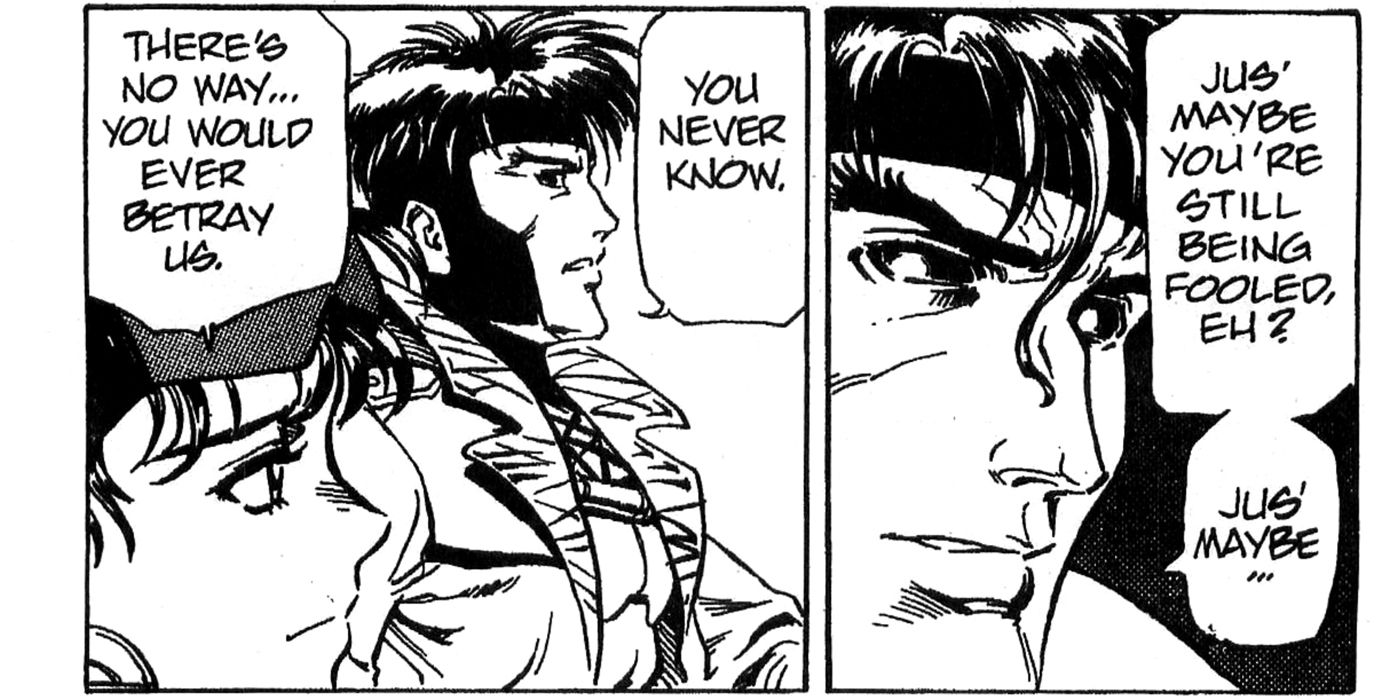Welcome to Adventure(s) Time's 136th installment, a look at animated heroes of the past. This week, we're continuing our look at the little-known manga adaptation of the 1990s X-Men: The Animated Series. And if you have any suggestions for the future, let me hear them. Just contact me on Twitter.
Debuting on February 13, 1993, "Slave Island" is one of the more memorable Season 1 X-Men episodes. The episode's script comes from Mark Edward Edens, following up the cliffhanger to the previous installment "Cold Vengeance," written by his brother, Michael Edens. The last episode had Storm, Gambit, and Jubilee investigating the island-nation of Genosha, which claimed to be a vacation haven for mutants. Shortly after their arrival, the trio was attacked by Sentinels and armed Genoshan soldiers.
X-Men: The Manga didn't go for a direct one-episode to one-issue adaptation, so X-Men: The Manga #13 (released in America with a September 1998 cover date) opens with the closing fight scene from "Cold Vengeance." The adaptation, from Rei Nakahara and Hirofumi Ichikawa, with translations by Mutsumi Masuda, devotes nearly three issues to this episode and gives it the less provocative title, "Mutant Island" in place of "Slave Island." The previous issue teased that the anime-inspired Genoshan tech was going to look darn impressive in the adaptation, so it's a bit disappointing that much of the introductory fight sequence is devoted to reaction shots from the X-Men and some dashed off explosions.
However, a few pages into the issue, after Jubilee is tossed into the detention center, we do get at least one cool shot of the Genoshan guards.
Having established Storm's claustrophobia earlier this season, the story places her in a horrifying predicament, as she's thrown inside a small metallic box as punishment for rebelling. The stifling, confined space is a truly abominable punishment for Storm, who begins to hallucinate after hours of imprisonment. There's nothing overtly violent about these scenes, but they are memorable for being particularly brutal.
The adaptation doesn't vary wildly from the source material. Using special collars to restrain their powers, the Genoshan authorities force their mutant captives to construct a dam, which will be used to power Master Mold's Sentinel factory. It's unlikely Jack Kirby had any manga influence in mind when designing Master Mold, but the massive robot certainly translates well when rendered by Ichikawa. It's hard to argue Master Mold ever looked any better in the Western comics.
Meanwhile, Gambit convinces the authorities that he’s actually working undercover, but soon takes advantage of his limited freedom to escape. This is the most attention Gambit's received in the series so far, and it seems as if the manga artists have chosen to specifically reference the Jim Lee X-Men comics for Gambit's look. Many of the other X-Men maintain a manga look during this arc, but Gambit appears as if he's stepped out of one of Jim Lee's issues.
While fleeing, Gambit encounters Cable, a former Genoshan mercenary who turned on the nation's leader, who insists that his subordinates refer to him as... the Leader. Cable turned against his bosses after discovering Genosha’s treatment of mutants. This origin is an invention of the cartoon and was written at a time when Cable's backstory was almost non-existent in the comics. Readers really knew that Cable had some feelings towards mutant activism and a past performing mercenary work, which is likely all the show's producers had to work with.
Cable's mutant ability of limited telekinesis had been revealed by his creator Rob Liefeld in X-Force #1, a few months before the show went into production, but it's possible the producers didn't know this when making the episode. The audience has to take it on word that he's a mutant, much as comics fans did for the first two years of Cable's existence. (One of the many background characters in the episode is Domino, who also lacked any specific mutant powers at this time in continuity. A decision was made to give her the ability to charge up inanimate objects, much like Gambit's.)
The manga version of Cable is rather imposing, sticking with the cartoon's heavily detailed design, incorporating all of the pouches and random gear that was once considered silly '90s excess. Ichikawa's style makes it work, though. Interesting that in both the cartoon and manga, his stylized "X" emblem remains, though he's not a member of any X-team at this point.
Cable's introductory line in the cartoon -- sardonically calling himself the "Wild Man of Borneo" -- was shockingly obscure for a show aimed at younger viewers. (The Wild Man of Borneo is a 1941 comedy about a traveling con man, set in the carnival scene of the early 1900s.) The manga translation gives him an alternate line, one that presumably works better overseas, assuming certain 1980s action movies were a hit in Japan -- "I'm Rambo's second cousin."
With Cable’s help, the mutants are freed, and Storm dramatically summons her powers to destroy the dam. Granting Storm a dramatic hero moment after her earlier torment is a nice catharsis for the climax. There's also a notable sequence that has Storm lecturing the captive mutants not to harm their human oppressors (even after what she's lived through,) echoing statements she made to Gambit in the previous episode.
Cable, meanwhile, faces off against a prototype Sentinel, shortly after he confronts his former employer. The manga gives this scene a truly sublime sound effect -- "Smoulder!"
Perhaps the story's greatest moment has Master Mold discovering, as the dam collapses, that he's still plugged into the wall. In the final moments, the rest of the X-Men (suspicious because the others never contacted them after reaching Genosha) arrive and rescue their teammates. The team flies home, setting up a tag for the next episode. But that's not the way everyone remembers it.
Because episode eight wasn’t ready yet, "Slave Island's" cliffhanger had to be replaced when this episode originally aired. In the original version, Cyclops notes Xavier isn't answering his calls, but still the X-Men return home in a happy ending. In the standard ending, the one adapted by the manga, they return home to discover Xavier missing and the mansion in ruins.
CONTINUITY NOTES
Numerous mutants make cameo appearances in this episode, including Mystique, Pyro, Blob, Northstar, Aurora, Caliban, Sunfire, and X-Force members Warpath, Feral, Domino, and Rictor. Most of these characters also appear in the manga adaptation. Mystique's placement in Genosha at this time doesn't quite work with continuity, given that she's supposed to be impersonating a Dr. Adler on Muir Island, as revealed in upcoming episodes.
Although comics fans know Cameron Hodge as an anti-mutant zealot who feigned a friendship with the original X-Men, the cartoon doesn't explain how he goes from Beast's lawyer (back in the third episode) to stooge of the Genoshan government. There also seems to be some detailed backstory for the Genoshan Leader that's never revealed on the show.
Canadian actor Lawrence Bayne provides the voice for Cable. He'll return for numerous roles in the show, voicing Fabian Cortez, Erik the Red, Corsair and even Captain America.
Cable's allowed to carry his massive guns, although its blasts don't lead to direct explosions. Its targets charge with energy for a few seconds before detonating, much like Gambit's charged playing cards. Apparently, a lapse between impact and detonation was enough to appease the censors.
THE NEW X-MEN
Is it disappointing to see Cable appear on the X-Men's debut animated series before more "classic" mutant characters? Maybe, but in the context of the times, Cable was one of the hottest characters in comics. He'd already had an action figure released through the sub-line of X-Force toys, with a mold virtually identical to his appearance in this episode. (It's surprising in retrospect that the show never featured a proper appearance from the X-Force team, given that the characters were already starring in their own toyline.) The show captures much of the mystery man persona responsible for his early popularity, and the character also looks pretty cool after his manga makeover.
The more memorable aspect of the episode is the tease that Gambit's a traitor to the team. There are stories going back to his creation that Chris Claremont and Jim Lee allegedly envisioned him as a plant sent by Mr. Sinister or perhaps even another manifestation of Sinister's consciousness, so the idea of Gambit acting as a turncoat seems inescapable in this era.
Even when the episode's climax apparently clears Gambit, doubts still linger. On their ride home, Gambit teases Jubilee with the idea he'd be perfectly willing to sell the team out if it suited his needs. Maybe he's picking on her, but the question remains unanswered, planting seeds for the season's upcoming X-traitor plot. The idea of the charming rogue actually being a rogue wasn't something audiences were used to seeing on Saturday morning TV, and it's another example of the show reinventing expectations for a superhero series.
0 Links

